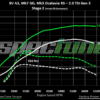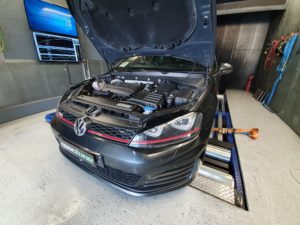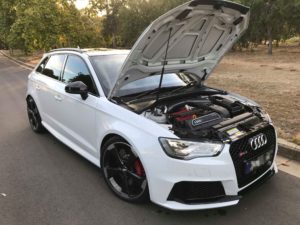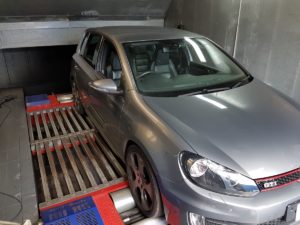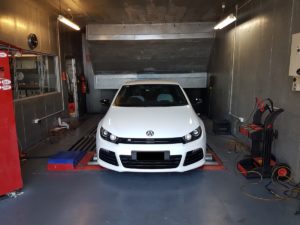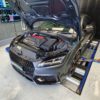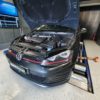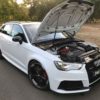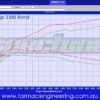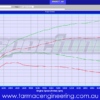No products in the cart.
Return To ShopMk6 Golf R, ED35, Scirocco, 8P S3 Performance Guide
PThis is a general guide for anyone looking to increase the performance of their Mk6 Golf R, ED35, Scirocco, 8P S3. We will try and cover off simple modifications all the way up to built engines and water methanol injection etc however we won’t go too far into technical aspects. If you have any questions or would like anything added please send as an email at info@tarmacengineering.com.au
There are 2 sides to increasing the performance of this platform. 1 is the hardware and 2 is the ECU software and if you have a DSG transmission the DSG software
Increasing the performance of a Mk6 Golf R, ED35, Scirocco, 8P S3. What works and what doesn’t?
Cold Air Intakes (CAI)
We’ll start with the most popular hardware modification being a Cold Air Intake. The factory air intake system has been reused from the Mk5 platform and is terribly restrictive. The factory setup has 1 inlet point of air, it then travels down a pipe around a corner then gets sucked through a restrictive panel filter takes another right turn and then finally into the turbo. WHY? There would be many reasons why VW decided on this route including production cost, reliability, environments like snow season in Europe and other parts of the world.
After testing many types of Cold Air Intakes (CAI) we settled on this one. Most aftermarket intakes for these vehicles consist of a straight flowing pipe from the turbo to the filter, pipe materials vary as does filter technology. We were able to make consistent gains of 13kw at the wheels (Golf R) on a Dyno Dynamics roller dyno. That’s almost a 10% increase in factory power output which is quite impressive for a CAI and goes to show how restrictive the factory intake system is. Your turbo will also be able to breathe more efficiently subsequently increasing its life and allowing us to push more airflow/boost trough at a later stage.
FAQ’s
Is the intake/turbo noise increased?
Yes, depending on which pipe material and filter combination is used the induction noise will be increased whilst the car is on boost. You will also get whoosh and pigeon noises when lifting off the throttle.
Conclusion: A must do for anyone looking for additional power. We highly suggest this with an ECU Tune
ECU Tunes
Tuning the Engine Control Unit is the single biggest power increase you will obtain. Load some new Software in like our SpecTune and a 20-30% power gain can be achieved without any other modifications however for best bang for buck we suggest an intake + ECU tune. With multiple hardware modifications a 40-50% increase in power can be achieved without changing the turbocharger. We wont go into too much detail about ECU tunes here as there is vast information around including information about SpecTune which can be found here and be purchased here
Conclusion: The best value for money modification you can do
Downpipes
A downpipe is the first part of the exhaust system that is bolted directly to the turbo and usually has a join half way along the system which leads into the rear muffler. Much like the intake we’ve found the factory downpipe to be quite restrictive as it consists of 2 x 800 cell catalytic converters and a 2.5 inch diameter pipe with resonator in the midsection although the resonator is only there to cancel out some noise frequencies and usually doesn’t hurt the flow.
The most common replacement is a 3 inch diameter stainless steel downpipe with a 1 x high flow 200 cell catalytic converter. Good quality downpipes like this one here have a cast or specially made bellmouth design to help extract exhaust gases quicker.
The aim is to get air in and out of the turbo as efficiently as possible so the intake and downpipe really work hand in hand.
Once the downpipe is upgraded you will see slightly quicker turbo spool (power comes on quicker) great midrange torque and improved overall power. You will need to make sure your ECU tune is updated to suit the use of a downpipe.
FAQ’s
Is the exhaust louder with a downpipe?
Yes, noise is increased considerably. You will sometimes get a few pops and cracks on gear changes too.
When should I add a downpipe?
We recommend it be the second modification you do after the intake is replaced.
Conclusion: A worthwhile modification if you’re chasing additional power and torque.
CAT Back Exhausts
As the name suggest a cat back exhaust is from the catalytic converter backwards. Some come with a resonator and some come without. We recommend the use of a resonator when replacing the rear muffler to take out some of the “rasp”. The factory rear muffler actually flows very well and there is no need to replace it if you’re chasing additional power. Cat back exhaust systems usually only provide additional and/or a change in exhaust note/sound, occasionally there is a slight increase in peak power but its not something you will feel on the road.
We’ve run the factory rear muffler with an upgraded turbocharger at double the factory power output.
Conclusion: A modification for people wanting a louder car
Fueling – HPFP, Rail Valves & LPFP
With the intake, downpipe and Stage 2 ECU tune we start to reach the limits of the factory fueling setup. To support higher boost levels and/or more ignition timing meaning more power we need to upgrade the HPFP (high pressure fuel pump) and high pressure rail valve. Whilst just upgrading the HPFP on its own is enough for us to make improvements in power we generally do the High Pressure Rail Valve as well. The factory valve has a cracking pressure of 125 bar whilst only 120bar of that is requested in the factory ECU mapping. We opt for a 145 bar rail valve when upgrading the fueling system. This gives us plenty of room to move, maximum power to be made and most importantly its safe.
LPFP (Low Pressure Fuel Pump) does not need to be upgraded until a bigger turbocharger is used and even then it depends on how far the car is pushed. If you’re leaving the standard turbo on the car then leave the standard LPFP in. Depending on what turbocharger is used we log LPFP pressures to determine if its needed, don’t believe everything you read on the internet.
Intercoolers
Aftermarket intercoolers on this platform don’t produce more power just by bolting them on however they do produce more consistent power. For example, if we were to put a Golf R on the dyno with a intake, downpipe and ECU tune it might output approximately 200kw at all 4 wheels on the first run, then 195kw on the second, then 190 on the third. This is because we’re already demanding a lot more boost from the turbocharger therefor warmer air and the factory intercooler cannot keep up with cooling the air down, (trying not to get to technical) as the intake temperatures rise the ECU is programmed to dial back boost and ignition timing resulting in less power.
If we replace the intercooler with a quality aftermarket intercooler and re run the car on the dyno the results would be similar to 200kw at the wheels on the first run, even 200kw on the second run and eventually you would start seeing a drop off in power but nothing like that of the factory intercooler.
Conclusion: Great for consistent power beyond stage 2 levels.
Turbochargers
In the never ending search for power we find ourselves at a point where the next step in power is adding a larger turbo. This topic can get quite long and technical so we will keep it short.
We’re really liking the hybrid turbocharges like the TTE480 because they’re a direct bolt on and relatively cheap. They make great mid range to top end power and require minimal other modifications. Usually a higher pressure rail valve and LPFP (if running max power) is all you need. Full boost does come on a little later than the factory K04 turbo but they’re still fun to drive on the street.
There are many big turbo choices but turbos capable of 500-600HP really need to have built engines which adds another $10k to your costs. We’ve found that big turbos such as the gtx3071 and gtx 3076 are extremely fun when on boost but before 4000rpm there is absolutely no power which can make for an annoying daily driver. I suggest people do a lot of research into upgrading the turbo as it can make or break your car.
Water Methanol Injection (WMI)
Information on WMI can be found on the manufactures websites but basically a mix of 50% methanol and 50% demineralised water spraying a super fine mist into the inlet system (after the intercooler) provides a huge drop in air intake temperature allowing you to run 3-5psi more boost or more ignition timing netting you a substantial gain in power. WMI works great in high boosted applications where intake temps are high and where even aftermarket intercoolers start to struggle keeping the air cool. The downside of WMI is reliability, nozzles can become blocked, hoses start leaking, pumps or wiring can become faulty. We highly suggest a weekly test and check over your WMI system. Luckily the Bosch ECU’s have intelligent inbuilt safety features and will pull up to 12 degrees of ignition timing out (this can be adjusted for more) under certain circumstances, so if your WMI stops working and intake temps get extremely hot therefore/or the knock sensors sense knock/detonation (bad) the ECU will basically zap all your power out. You will certainly feel this because it will half your power in which case you would be wise to stop driving the car hard.
Another thing worth mentioning is tank size. Most kits come with a 2-3L tank. If you are running a big turbo (35+psi) and have nozzles spraying 500ml/min you will only get 4-6mins of full boost driving. Lame. We suggest a 10+L boot setup which lasts enough for a track session and weeks of daily driving.
Conclusion: Great for high boosted applications or people wanting maximum performance but comes with more maintenance
Built Engines
The factory engine is surprisingly strong but there will come a point where the huge spikes in torque from that big turbo running 35+psi boost will put the factory parts under too much stress and it will only be a matter of time before something breaks and when it does it will most likely be a complete bin job. This is a long and possibly argumentative subject so we’re going to keep it simple by saying keep it simple. Build an engine with parts that are known to work, not just what someone is selling or you’ve been told from the internet. The most common problems we see where $10,000-$30,000 engines fail are usually caused from aftermarket camshafts or oil supply issues. We suggest not using aftermarket camshafts as the factory ones work fine and do your research on oil pumps and crank case breathing systems.
We really hope this helps you and if you have any questions please dont hesitate to contact us.


